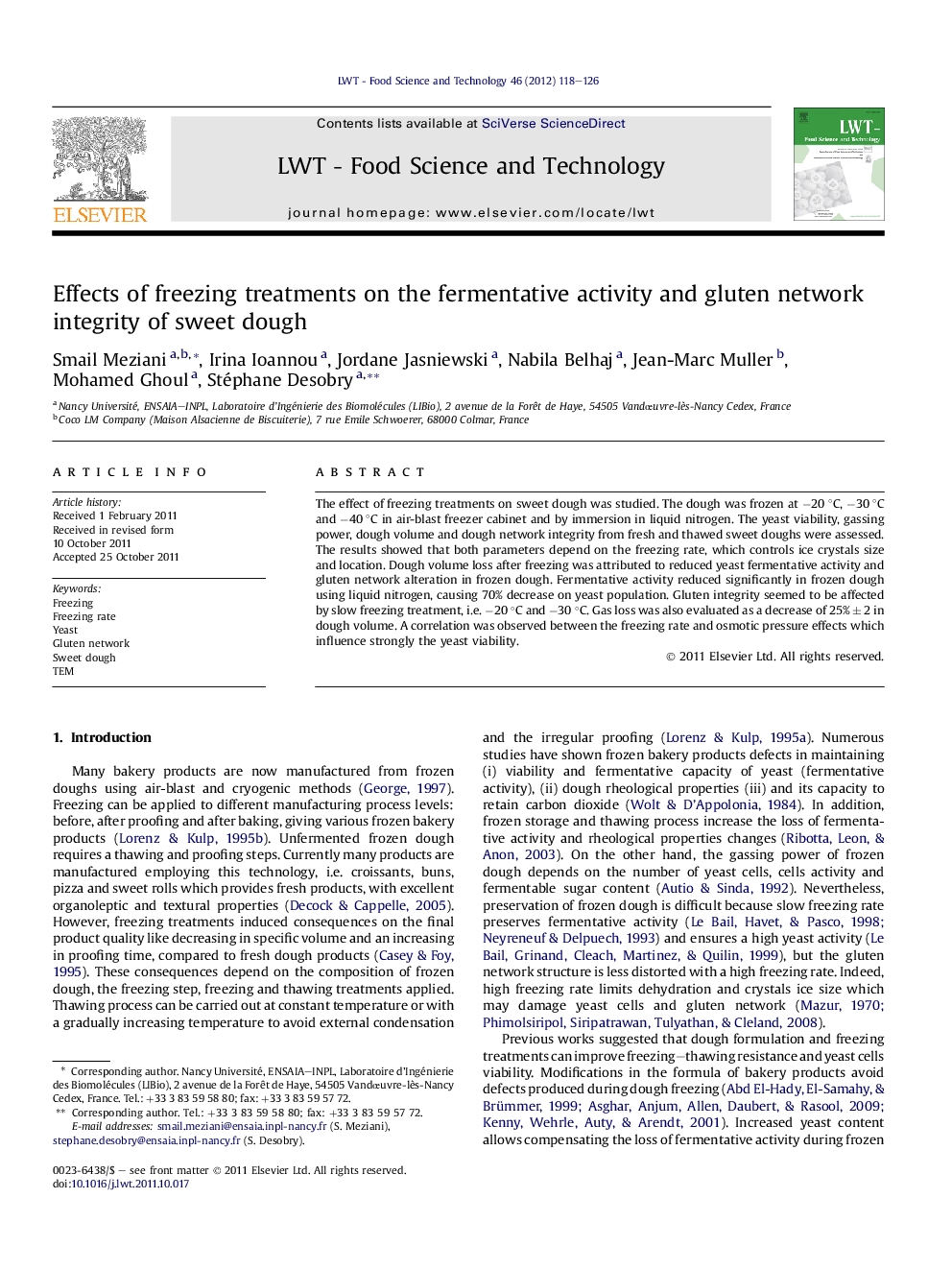| Article ID | Journal | Published Year | Pages | File Type |
|---|---|---|---|---|
| 6405370 | LWT - Food Science and Technology | 2012 | 9 Pages |
The effect of freezing treatments on sweet dough was studied. The dough was frozen at â20 °C, â30 °C and â40 °C in air-blast freezer cabinet and by immersion in liquid nitrogen. The yeast viability, gassing power, dough volume and dough network integrity from fresh and thawed sweet doughs were assessed. The results showed that both parameters depend on the freezing rate, which controls ice crystals size and location. Dough volume loss after freezing was attributed to reduced yeast fermentative activity and gluten network alteration in frozen dough. Fermentative activity reduced significantly in frozen dough using liquid nitrogen, causing 70% decrease on yeast population. Gluten integrity seemed to be affected by slow freezing treatment, i.e. â20 °C and â30 °C. Gas loss was also evaluated as a decrease of 25% ± 2 in dough volume. A correlation was observed between the freezing rate and osmotic pressure effects which influence strongly the yeast viability.
⺠Rapid freezing reduced significantly fermentative activity of yeast. ⺠Slow freezing rate had a significant effect on rheological parameters for frozen sweet doughs. ⺠A correlation is observed between the freezing rate and osmotic pressure effects. ⺠Linear correlation exists between the lysed yeasts and the glutathione (GSH) released during freezing treatments.
